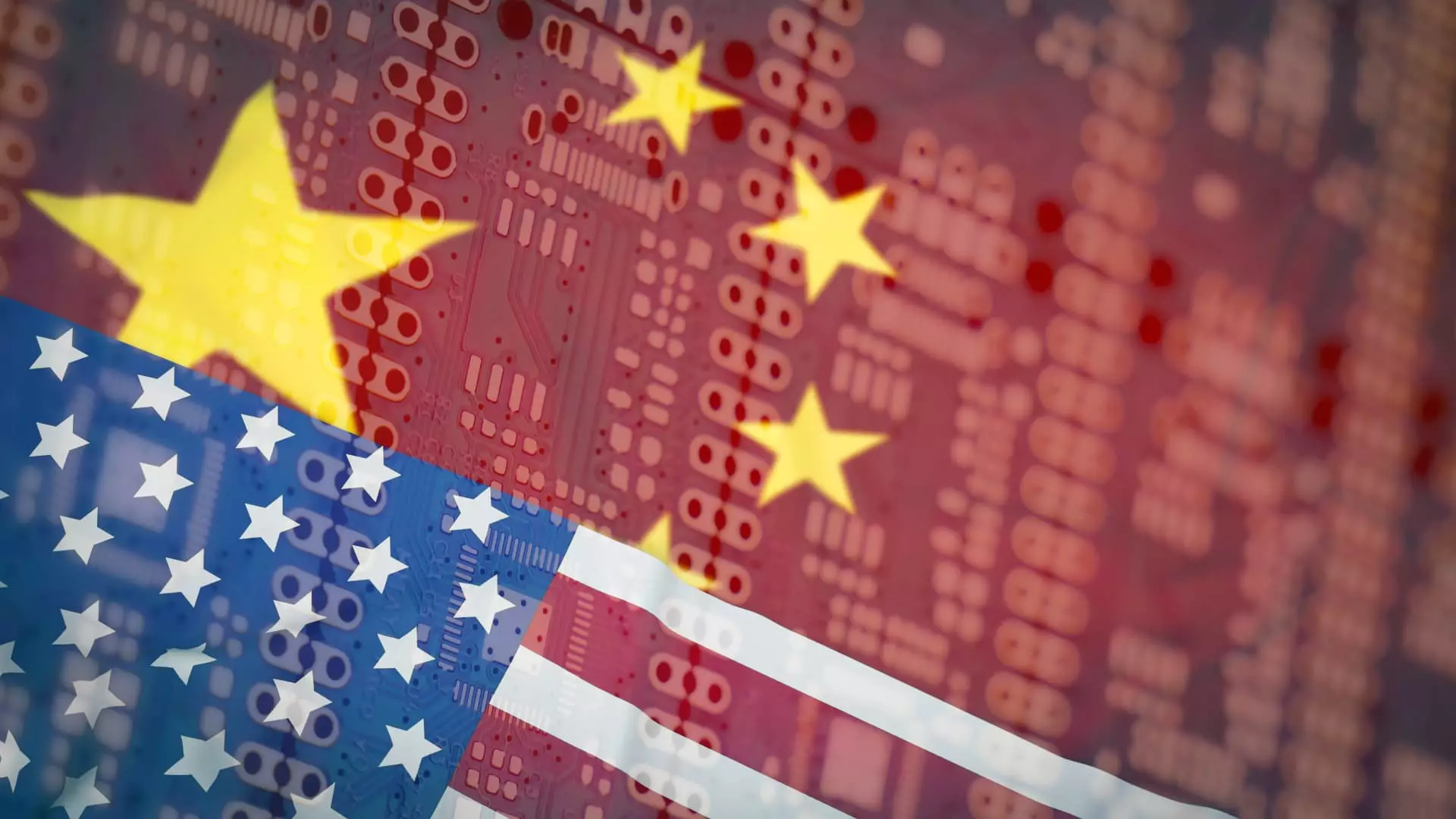In the rapidly evolving landscape of artificial intelligence (AI), China’s tech behemoths, Tencent and Baidu, are pushing the boundaries despite facing stringent U.S. chip export restrictions. These constraints, primarily affecting key semiconductor players like Nvidia and AMD, aim to curb China’s technological ascendance. However, rather than crumbling under pressure, these companies exhibit a remarkable ability to adapt and innovate in unexpected ways.
Tencent’s president, Martin Lau, emphasized during a recent earnings call that the company has secured a robust stockpile of GPUs, the vital engines behind AI model training. Interestingly, Lau pointed out that Tencent is not merely dependent on acquiring more GPUs. Instead, the company has optimized its approach to AI training, achieving significant results with a reduced cluster of high-end chips. This strategic pivot is emblematic of a broader trend among Chinese firms: leveraging existing resources optimally to drive technological growth without falling victim to external limitations.
Creative Approaches in the Face of Adversity
Baidu’s recent assertions of its “full-stack” capabilities highlight just how versatile Chinese technology firms can be. By effectively combining cloud infrastructure and proprietary AI models, Baidu has positioned itself as a formidable force, even without access to the most cutting-edge semiconductor technology. Dou Shen, Baidu’s AI cloud business president, argued that this unique integration allows the company to create valuable applications, indicating a shift from raw power to intelligent innovation.
Furthermore, both companies are investing in software optimization, underscoring a movement away from brute force solutions toward more strategic resource management. The ability to execute AI tasks effectively with a smaller pool of GPUs demonstrates a fascinating blend of resilience and ingenuity that could redefine competitive dynamics in the tech industry. By focusing on software-driven efficiencies, these companies reveal that true innovation lies not just in hardware procurement but also in intellectual and engineering prowess.
Domestic Capital and Nip in Global Supply Chains
Moreover, both Tencent and Baidu are shifting their eyes from international dependencies toward domestic semiconductor development. The commitment to developing homegrown chips signifies not just a response to U.S. sanctions but a long-term strategic pivot aimed at self-sufficiency and resilience. Baidu’s recognition of domestic semiconductor advancements reflects a broader narrative of Chinese companies striving to create a sustainable ecosystem that reduces reliance on foreign technologies.
This trend of nurturing local chip production may not yield results comparable to U.S. technological supremacy immediately, but it signifies an essential growth trajectory. Analysts like Gartner’s Gaurav Gupta acknowledge the consistent and ambitious nature of China’s development efforts, asserting that the country has made commendable progress in various semiconductor segments. This resolve could enable Chinese tech firms to navigate and potentially diminish the impact of export limitations from the United States.
AI Innovation Amid Controversies
The landscape is further complicated by the increasing dialogues within the U.S. tech community, where significant figures, including Nvidia’s CEO Jensen Huang, consider the chip restrictions detrimental to American interests. Huang’s assertion that these regulations are counterproductive opens a can of worms in a typically one-sided narrative, where the U.S. dominance often overshadows the resilience of its rivals.
This environment illustrates a critical juncture in the global tech race. China’s technological advancements are not merely emerging—they’re being crafted, honed, and strategically deployed in a manner that questions the sustainability of U.S. regulatory power. For all intents and purposes, the notion that the U.S. can dictate terms unilaterally in a modern interconnected world is being put to the test.
The Road Ahead: A Competitive Tech Ecosystem
The tech giants of China are not just enduring; they are thriving under adversity. As the ongoing tensions between the U.S. and China shape a new competitive landscape, the focus will increasingly be on which side can innovate—creating smarter, more efficient, and ultimately more powerful AI systems. Furthermore, as Chinese companies enhance their domestic capabilities in semiconductors and related technology, the equilibrium may shift in ways not anticipated by Western regulators.
It is essential to recognize that the future of AI and semiconductor innovation doesn’t rely solely on hardware but also on software prowess and strategic vision. As Tencent and Baidu redefine their operational landscapes, they represent a crucial case study in agility and strategic foresight—qualities that may determine the contenders in the international tech race. As this battle rages on, the implications for global economics, tech innovation, and geopolitical relations will be profound and long-lasting.

